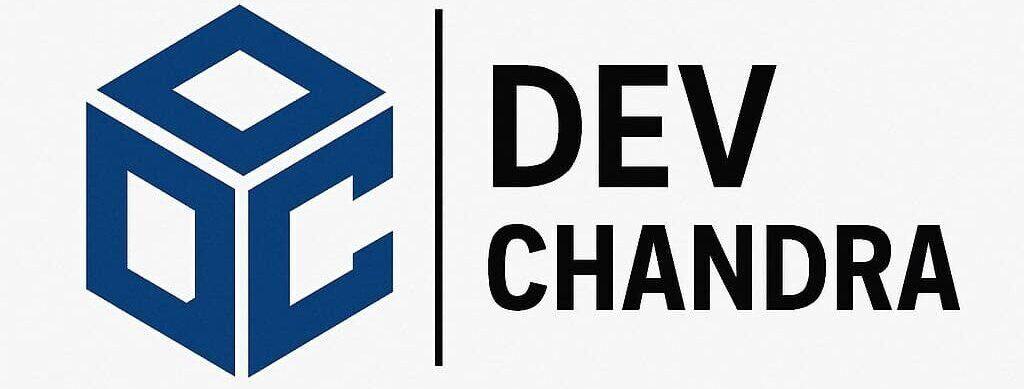How to Build Good Habits
Building good habits is essential for long-term success in life. It separates the people who succeed from those who don’t, as consistent practices make all the difference. But creating new habits doesn’t happen quickly—it requires dedication, discipline, self-awareness, and a plan.
Learn the four laws of behavior change from the book, Atomic Habits, so you can build good habits and achieve lasting change in your life.
Whether you want to establish a daily routine, build better money-management habits, improve your physical health, or just get more organized overall—you can use “atomic habit” principles to break down large tasks into small, focused activities and achieve lasting change.
In this article, I will share my thoughts and tips on how you can best develop successful patterns of behavior that eventually become second nature in your daily life!
What is a Habit?
James Clear’s book, Atomic Habits: An Easy and Proven Way to Build Good Habits and Break Bad Ones (book summary), provides four steps to building good habits. However, before diving into how to build good habits, we need to define what a habit is:
A Habit is “a behavior that has been repeated enough times to become automatic.”
A small habit can be repeated almost subconsciously and often unconsciously by an individual. Habits range from simple to complex and generally become ingrained in our day-to-day lives.
They can be essential for survival, like brushing your teeth every day, or they can provide convenience, such as consistently keeping toiletries on the same shelf. Habits vary significantly from person to person and can help one better manage their time or fulfill goals.
Thus, it’s important to remember that it takes dedicated practice for a habit to form, and it can be just as challenging to break free once it becomes deeply engrained into an individual’s life.
The Habit Loop
The Habit Loop is the process by which good habits get established. The Habit Loop is the feedback loop to describe the four steps of habit formation:
- Cue – the trigger in your mind that initiates a behavior
- Craving – the motivational force behind each habit
- Response – the actual routine that you performed in thought or action
- Reward – the end goal of every habit that satisfies and teaches you
The “cue triggers a craving, which motivates a response, which provides a reward, which satisfies the craving and ultimately, becomes associated with the cue.”
Four Laws of Behavior Change
Clear reframes the four steps into the following laws to help you build good habits:
Four Laws of Behavior Change – the rules of building positive habits:
- Make It Obvious (Cue)
- Make It Attractive (Craving)
- Make It Easy (Response)
- Make It Satisfying (Reward)
Make Good Habits Obvious
First, the Cue triggers your mind to start a routine. This stage provides the law to “Make It Obvious” to develop a good habit.
Becoming Aware of Good and Bad Habits
Over time, with consistent practice, your mind detects cues without much thought. Eventually, your good or bad habits become automatic, and you stop noticing the behavior. Thus, to change your behavior, you need to become aware of your routines.
First, you can use a Habits Scorecard to identify and track your good habits. This simple exercise helps you observe your behavior by writing down and checking off habits each day you complete them. For example, if you need help flossing your teeth, you can track each day you floss on a calendar.
Second, the Pointing-and-Calling strategy allows you to identify a nonconscious habit by verbalizing your actions. As s result, you become conscious of performing all behaviors. For example, you can point-and-call when doing your morning daily routine to ensure you perform each step.
Starting a New Positive Habit
You can make it obvious to develop a new habit using Implementation Intention and Habit Stacking. The first strategy of the Implementation Intention pairs a new habit with the two most common cues:
“I will [BEHAVIOR] at [TIME] in [LOCATION].”
- Behavior – the habit that you want to do
- Time – when you will perform the behavior
- Location – where you will achieve the behavior
The second strategy of Habit Stacking uses implementation intention to pair two or more habits together:
“After [CURRENT HABIT], I will [NEW HABIT].”
- Current Habit – the habit that is already automatic
- New Habit(s) – the habit or set of patterns that you will perform after the current habit
These strategies work well for morning and evening routines. For example, “I will perform my morning routine at 8:00 AM in my home office. The habits stack consists of making my bed, drinking water, stretching, meditation, deep breathing, exercising, preparing coffee, and planning for the day.
Role of Your Environment
Your environment significantly impacts your behavior. Since cues initiate every habit, our minds notice the signals that stand out. A decluttered workspace where every object has a place and purpose can lend itself to simply forming positive habits. Thus, we want to redesign our surroundings to build new habits, make good habits obvious, and evade poor cues.
Make Good Habits Attractive
Second, the Craving is the underlying motivation for each habit. This stage provides the rule to “Make It Attractive” to create a good habit.
Making Positive Habits Irresistible
The more attractive an opportunity is, the more likely it is to become habit-forming. And so we can understand our cravings by measuring dopamine, a neurotransmitter released when your brain is expecting a reward. Further, the Dopamine-Driven Feedback Loop encompasses habits as it is a self-perpetuating circuit that gets one to act from the anticipation of the reward.
Thus, you are more likely to act when your dopamine levels spike. So, you can make habits more attractive with Temptation Bundling, which is a strategy of pairing a desired action (want) with a necessary action (need).
Role of Friends and Family
Previously, we discussed the rule of your environment in building good habits. Similarly, our work leadership and social culture heavily influence our actions and patterns. We have a strong need to conform and be part of the group, so we will adopt habits that our culture accepts and celebrates.
We tend to imitate the habits of three social groups: the Close, the Many, and the Powerful. The Close group is those who are closely connected to us, like our Family and Friends. The Many are the tribes or the communities that we join. Lastly, the Powerful are those with Status and Prestige that we don’t know directly but aspire to be like.
Since the tribe’s behaviors can be more powerful than that of close individuals, you can build better habits by joining a culture with two attributes. First, the standard behavior of the tribe matches your desired behavior. Second, you have similarities with the social group. For example, if you want to develop a running exercise habit, a running club in your city would satisfy these attributes.
Make Good Habits Easy
Third, the Response is the actual habit that you perform. This stage provides the rule to “Make it easy” to create a good habit.
Making Progress on Building Good Habits
The best way to learn behaviors is to practice. Then, through habit formation, a behavior becomes progressively more automatic through reputation. First, it takes a lot of energy and focus to start performing the habit. Next, you gain momentum after a few repetitions, but energy and attention are still required.
Finally, the behavior becomes more automatic than conscious. Note that the quantity of repetitions is more critical than the amount of time spent performing the habit. So, you must push past the few reps and take consistent action to make a behavior automatic.
Law of Least Effort
The Law of Least Effort shows that human behavior tends to move toward the option that requires the least amount of work. Thus, you need to reduce friction by decluttering and organizing your work space to make it easy to perform positive behaviors.
Further, for other habits, set up your surroundings to make future actions easy and improve results. For example, you can dress in your gym clothes and have your sneakers ready by your bed to work out first thing in the morning.
Stop Procrastinating
The shortest of habits can affect your behavior for hours to come. Further, habits can occur at decisive moments when your choices move you toward a productive day or an unproductive one. Therefore, you must master the small decisions that make up the larger decisive moments and deliver exceptional results (see 80/20 rule).
Sometimes we start too big, so the best way to counterbalance this tendency is to use the Two-Minute rule. This principle helps you downscale your habit to less than two minutes before starting it. When you continuously begin a good habit for two minutes, it will be more likely to stick and become automatic. After establishing a small positive habit, then you can work to optimize it.
Make Good Habits Satisfying
Last, the Reward is the result of the habit. The previous three rules support you in performing a specific habit in the present. Instead, this stage provides the rule to “Make It Satisfying” to create a good habit., while this law increases the likelihood of repeating the pattern in the future.
Cardinal Rule of Behavior Change
We need to delay gratification if we want to be successful. However, the human brain has evolved to prioritize immediate rewards over delayed gratification, which is embodied by this rule. The Cardinal Rule of Behavior Change states, “What is immediately rewarded is repeated. What is immediately punished is avoided.”
Thus, when a habit is satisfying, we are more likely to repeat that routine. So, you need to find a way to celebrate or give yourself an immediate reward to get a habit to stick.
Making Progress Every Day
Making progress is satisfying, which you can see on a Habit Tracker. It is a visual system to measure when you performed a habit or chain of habits
Habit Trackers make it satisfying by providing clear evidence of your progress. It reminds you to keep your streak alive and avoid breaking the chain. If you forget or selectively miss a habit, you should immediately get back on track and never miss twice.
Next Steps to Build Good Habits
All of us want to build good habits, but few of us succeed in doing so. Why is that? The answer often lies in our approach.
To increase the chances of building good habits, you need to understand how the mind works and use this knowledge to your advantage. In this blog post, we’ve shared the four laws of behavior change from James Clear’s book, Atomic Habits (book summary), to help you build good habits.
Now it’s time for you to put these into action. For further reading on habits, check out The Power of Habit (book summary) by Charles Duhigg. And if you need help getting started, book a call with us today. We’ll be more than happy to provide guidance and support as you take your first steps toward success.







